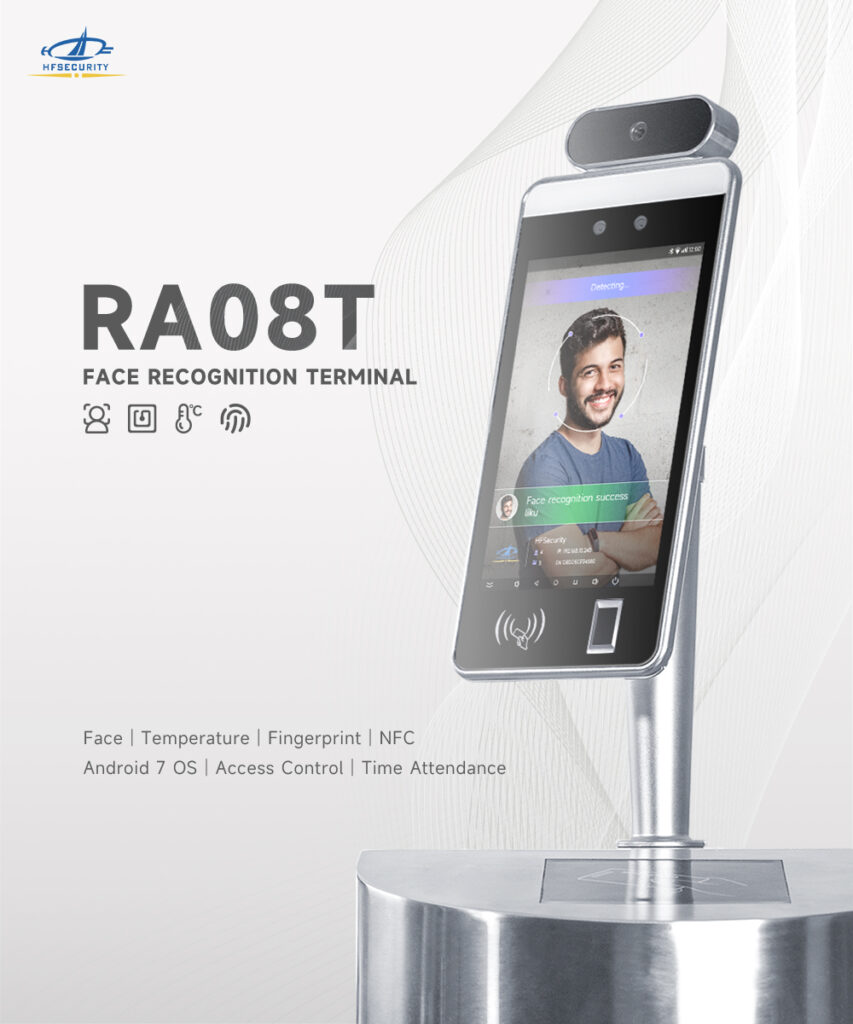生体認証自動化による刑務所管理:刑務所システムの革命
刑務所制度は、犯罪者を処罰すると同時に更生の手段を提供するという、現代社会に不可欠な要素です。刑務所制度の重要性にもかかわらず、刑務所制度には長年悩まされてきた課題がいくつかあります。主な課題の 1 つは、多数の受刑者を安全かつ効率的かつ効果的に管理することが難しいことです。
近年、技術の進歩により、刑務所システムが直面する課題に対処するための新たな機会が生まれました。最も有望なソリューションの 1 つが、生体認証自動刑務所管理システム (BAPMS) です。このシステムは、刑務所管理に対してより効率的で安全かつ費用対効果の高いアプローチを提供することで、刑務所システムに革命を起こす可能性を秘めています。
生体認証自動刑務所管理システム (BAPMS) とは何ですか?
生体認証自動刑務所管理システム (BAPMS) は、生体認証データやその他の自動化ツールを活用して刑務所内の受刑者の活動を管理するテクノロジーベースのシステムです。このシステムは、指紋、顔認識、虹彩認識、音声認識などの生体認証データを使用して受刑者を識別し、日常活動を管理します。
BAPMS は、受刑者の識別、アクセス制御、受刑者の動きの追跡、受刑者の活動のリアルタイム監視など、刑務所管理のさまざまな側面を自動化するように設計されています。このシステムは、さまざまなセンサー、カメラ、その他の自動化ツールを利用して受刑者に関するデータを収集および処理し、その後、高度なアルゴリズムを使用して分析し、受刑者の行動に関するリアルタイムの洞察を提供します。
生体認証自動刑務所管理システム (BAPMS) はどのように機能しますか?
生体認証自動刑務所管理システム (BAPMS) は、いくつかの主要コンポーネントを統合して機能する高度なシステムです。これらのコンポーネントには、生体認証センサー、カメラ、および受刑者に関するデータを収集するために使用されるその他の自動化ツールが含まれます。
このシステムは、受刑者の指紋、虹彩、顔認識、音声認識などの生体認証識別子に関するデータを収集します。生体認証データは、各受刑者を識別し、刑務所のさまざまな場所へのアクセスを制御するために使用されます。また、このシステムは受刑者の動きをリアルタイムで追跡し、受刑者の活動を監視して安全を確保することができます。
刑務所の生体認証自動化管理の主な特徴の 1 つは、受刑者の活動をリアルタイムで監視できることです。このシステムは、さまざまなセンサーとカメラを使用して受刑者の動きと活動を追跡します。これにより、異常な行動や疑わしい行動を特定し、適切な措置を講じることができます。
生体認証自動刑務所管理システム (BAPMS) の利点

生体認証自動刑務所管理システム (BAPMS) には、刑務所管理にとって魅力的な選択肢となるいくつかの利点があります。これらの利点には次のものが含まれます。
- セキュリティの向上
BAPMS の主な利点の 1 つは、刑務所のセキュリティを強化できることです。システムの生体認証センサーとカメラにより、受刑者をリアルタイムで識別して追跡できます。これにより、刑務所の立ち入り禁止区域への不正アクセスのリスクが軽減され、セキュリティが強化され、脱獄のリスクも軽減されます。
- コスト効率が良い
BAPMS は、刑務所管理のためのコスト効率の高いソリューションです。このシステムは、刑務所管理のさまざまな側面を自動化し、人的資源の必要性を減らします。これにより、刑務所システムをより効率的かつ低コストで管理できるようになります。
- 受刑者管理の強化
BAPMS は、受刑者をより効率的かつ効果的に管理する手段を提供します。このシステムは、受刑者の識別や追跡など、受刑者管理のさまざまな側面を自動化し、刑務所職員の作業負荷を軽減します。これにより、受刑者をより効率的かつ効果的に管理できるようになります。
- リハビリの改善
BAPMSは更生努力を改善する可能性も秘めています。このシステムは受刑者の活動をリアルタイムで監視し、異常な行動や疑わしい行動を特定することができます。これにより、受刑者が直面する可能性のある問題を克服できるよう介入し、適切なサポートとリソースを提供することができます。
バイオメトリック自動化刑務所管理は、特にセキュリティと安全性の確保という点で、どの政府にとっても困難な課題です。囚人の数が増え、セキュリティ上の脅威が増すにつれて、刑務所管理が安全で効率的なシステムを維持することがますます困難になっています。これらの課題に対処するために、バイオメトリック自動化刑務所管理システムが普及し、刑務所の全体的なセキュリティと効率性を高めるソリューションを提供しています。
の実装 生体認証自動刑務所管理システム 生体認証、CCTVカメラ、統合データ管理システムなど、さまざまなテクノロジーを活用しています。これらのテクノロジーが連携して、受刑者と職員の安全を確保する安全で効率的なシステムを提供します。
このシステムは、顔認識、虹彩スキャン、指紋などの受刑者の生体認証データを中央データベースに取り込み、保存するように設計されています。このデータベースは、刑務所内の移動、家族や弁護士の訪問、医療予約など、さまざまな刑務所活動中に受刑者の識別と確認に使用されます。このシステムにより、誤った受刑者が釈放されたり拘留されたりする可能性のある誤認のリスクが軽減されます。
生体認証による自動刑務所管理システムにより、刑務所職員は受刑者の日常的な活動を管理しやすくなります。このシステムは受刑者の動きを監視および記録し、受刑者が正しい場所にいること、許可されていない活動に従事していないことを確認できます。また、アレルギー、病気、投薬など、受刑者の病歴を追跡することもできます。この情報は、必要なときに受刑者に必要な医療を提供するのに不可欠であり、医療上の緊急事態のリスクを軽減します。
生体認証による自動刑務所管理システムの最も重要な利点の 1 つは、脱獄の試みの回数が減ることです。このシステムは、囚人が脱獄しようとしているなど、刑務所内での不正な動きを検出し、警備員にリアルタイムで警告することができます。また、このシステムは脱獄した囚人の動きを追跡できるため、警備員が囚人を見つけて逮捕しやすくなります。これにより、一般の人々だけでなく、囚人自身への危害のリスクも軽減されます。
このシステムにより、受刑者の家族や弁護士による面会も管理しやすくなります。このシステムでは、訪問者の生体認証データを保存し、受刑者のデータと相互参照することで、許可された訪問者だけが受刑者と面会できるようにします。これにより、刑務所に密輸品が持ち込まれるリスクや、訪問者が受刑者や他の訪問者に危害を加えるリスクが軽減されます。
生体認証による自動化された刑務所管理システムは、セキュリティと安全性の強化に加え、刑務所管理の効率も向上させます。このシステムでは、囚人の動きを追跡したり、面会を管理したりするなど、従来は手作業で行われていた多くの作業を自動化できます。これにより、刑務所職員の作業負荷が軽減され、囚人の更生や職業訓練など、より重要な作業に集中できるようになります。
刑務所の生体認証自動化管理は、刑務所管理者にリアルタイムのデータも提供し、刑務所管理について十分な情報に基づいた決定を下せるようにします。たとえば、刑務所の占有率に関するデータをシステムから提供できるため、管理者はリソースをより効率的に割り当てることができます。また、受刑者の活動、たとえば更生プログラムへの参加に関するデータもシステムから提供できるため、管理者は受刑者のニーズに合わせてプログラムを調整できます。
生体認証による刑務所の自動管理システムの導入には課題がないわけではありません。主な課題の1つはシステムのコストであり、これはかなり高額になる可能性があります。このシステムには、CCTVカメラなどのさまざまな技術の導入が必要です。 生体認証スキャナー、中央データベースなど、調達と維持にコストがかかるシステムもあります。しかし、セキュリティ、安全性、効率性の観点から見たシステムのメリットはコストを上回る可能性があり、どの政府にとっても価値のある投資となります。


